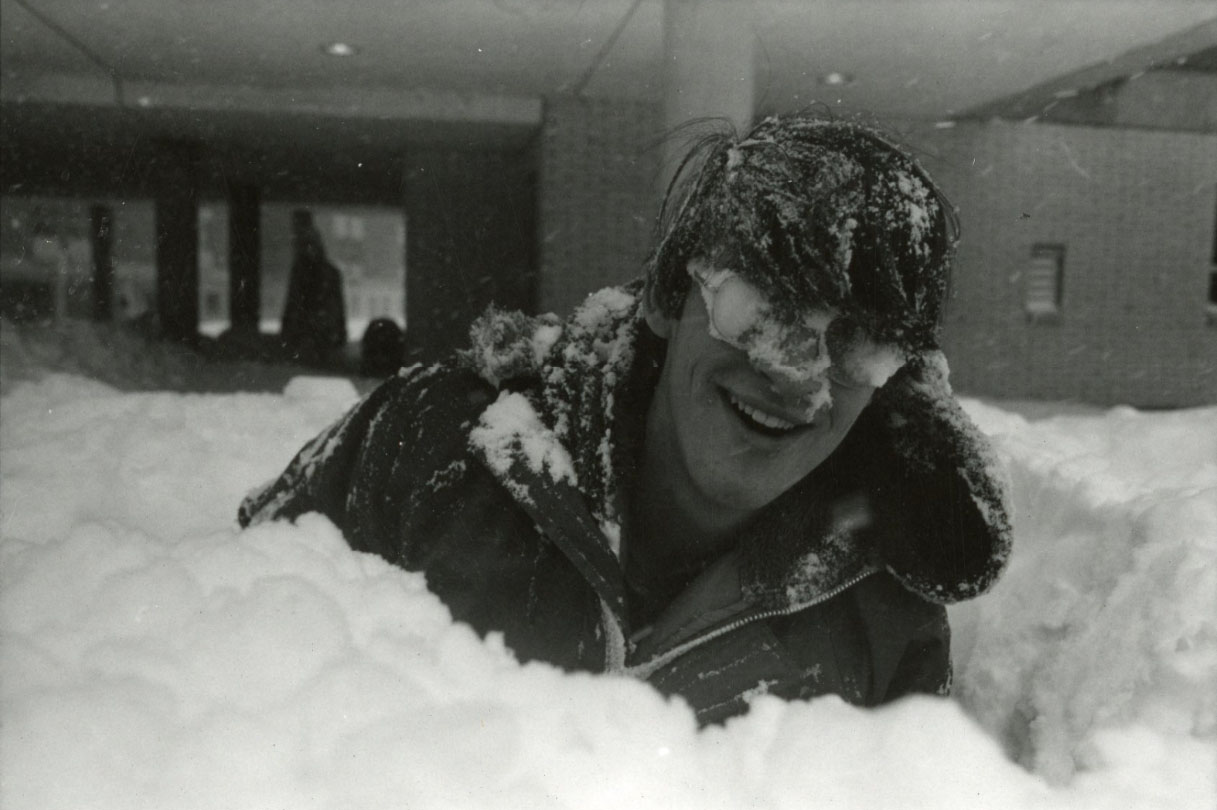Two feet of snow. Gale-force winds. Cars abandoned along highways. And at UConn: classes continuing as scheduled.
It was February 1978, and while the region was being walloped by an historic blizzard, things at UConn were, initially, going on as planned. Although commuter students were advised to stay home the day the blizzard arrived, vice-president for academic affairs Kenneth G. Wilson told residential students they should go to class, since their professors were likely to teach regardless of the weather.
By late afternoon, Gov. Ella Grasso declared a state of emergency and closed the roads, and UConn canceled remaining classes, as well as all classes for the following day. It was, Wilson said then, the first time in his 27 years at the University that classes had been canceled on account of weather.
In truth, the stretch may have been even longer: there’s no indication of classes being canceled between the New England Hurricane of September 1938 and the blizzard 40 years later, except on the day President John F. Kennedy was assassinated.
During the 1938 storm, students at the Connecticut – later the Daily – Campus managed to put out an issue, thanks to a mimeograph machine and bulletins from a battery-powered shortwave radio. They asked superintendent of grounds Sherman P. Hollister when classes had last been disrupted by weather, and he told them it hadn’t been since an ice storm in 1909.
In this segment from the UConn 360 Podcast, Tom Breen, Julie Bartucca, and Ken Best discuss the history of weather-related cancellations at the University, and learn just how rare it was in former times to suspend normal operations.
For full episodes of the UConn 360 podcast, visit uconn.edu/uconn360-podcast.



